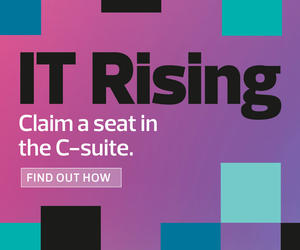How did a biophysicist like Melissa Woo end up as Michigan State University’s executive vice president for administration and CIO, not to mention president of the university’s nonprofit research foundation? It boils down to a passion for breaking through communication barriers, the goal at the very heart of IT.
EdTech: Focus on Higher Education spoke with Woo about starting over in IT, claiming a leadership role and how technology can transform the university experience.
EDTECH: Let’s talk about your career path. How did you come to your current roles at Michigan State University?
WOO: I don’t originally come from IT. I have a graduate degree in biophysics. In my first job, I actually worked as a health physicist. Because my “other duties as assigned” were maintaining the website and running a big internet mailing list, I realized at some point that I really liked that technology helped bring people together. It helps break down communication barriers, and I really wanted to be part of that. So, I literally started all over again with an entry-level job in IT.
I rose through positions of increasing responsibility. This is my fifth research university, and moving between institutions has helped as well. The president of Michigan State University was the president of the last institution where I worked. When he said that he was going to be moving to MSU, he asked if I was interested in coming along, and I said yes. I wasn’t in the CIO world for very long at MSU before he asked me to take on the larger role of executive vice president for administration, which has a broader portfolio.


EDTECH: How has that trajectory influenced how you approach your current roles?
WOO: Working for different institutions has given me this really broad perspective about how different people act, different types of environments and, dare I say, different politics between institutions. It’s given me a lot of tools for the virtual tool belt.
You can’t always use the same solution at a different institution because the culture will be different. It will always be a variation on the same thing that you’ve used to solve a problem before, but it will not be exactly the same solution.
I think pretty much every vertical has realized that IT is absolutely critical to the business.”
Melissa Woo
Executive Vice President for Administration and CIO, Michigan State University
And what’s also helped with being a CIO — this is my third time being a CIO — is just looking at the issues of the enterprise support units, such as facilities and human resources, other areas that fall under me now. We’re all enterprise support units, or what I describe as the units that everybody loves to hate, and we have a lot more in common than people think. I will hear from the VP for the facilities area or I’ll hear from the head of human resources about a problem they’re having with their constituents. And I’ll say, “You know what? We deal with something similar in IT, and this is how I managed that.”
RELATED Q&A: CIO Sharon Pitt discusses IT’s value-adding role for higher ed.
EDTECH: How has the role of IT evolved at universities over the course of your career?
WOO: Although higher ed does track a little behind the private sector, one positive way that IT has evolved is that IT is being seen more and more as a strategic part of the business, not just a partner. I hate talking about IT as being a partner to the business because it’s part of the business. It’s not a bolt-on. We are being seen as a strategic part of the business itself.
Back when I switched careers into IT, I really felt at that time that IT was still the tail wagging the dog. IT was putting out services and saying, “They will come if we build it.” That’s really not a good place to be. We’ve evolved to understanding that we’re supposed to be working with constituents, understanding what the needs are and helping guide people into understanding how we get from requirements to the services you actually want, appreciate and need.


EDTECH: What does it take to get buy-in from leadership when it comes to IT?
WOO: Buy-in from leadership means acting like part of the leadership. It’s being able to talk about the business you’re in. And in higher ed, it means being able to talk about and understand what the head of enrollment management is saying, or what the provost is saying, or what the head of research is saying. It’s actually understanding what their concerns are and the challenges they have. It’s not so much buy-in as simply understanding the rest of the business and then taking that understanding and finding ways that technology can help solve their problems and challenges. That’s going to get you to the leadership table.
EDTECH: How has the pandemic changed the way that university leadership might see the role of IT?
WOO: I would say the pandemic has definitely changed things for those IT organizations that perhaps were not seen as quite so critical. I think pretty much every vertical has realized that IT is absolutely critical to the business.
We in higher ed certainly could not have made the flip to fully online without IT support. I think my question at this point is whether the business will remember how critical we are post-pandemic. My cynical self says we’ll go back to the way we were. My positive self, though, keeps talking about a better normal in general. We must have a better environment for everyone in the workplace, as well as our students in higher ed, because we will have wasted the last year-plus if we didn’t learn something.
Photography by Logan Zillmer














